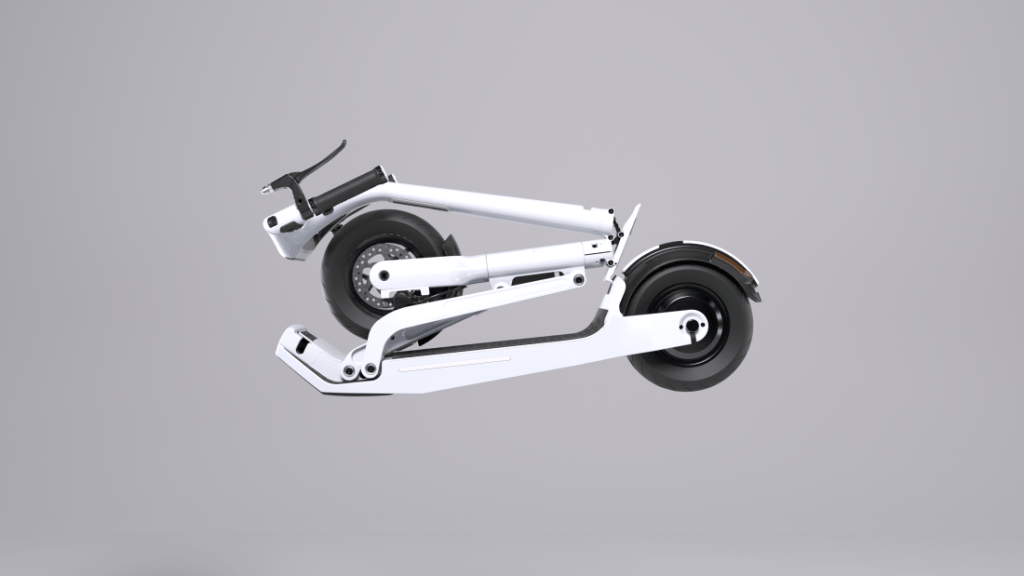Lavoie: McLaren Applied’s new micromobility company redefining urban mobility through motorsport and luxury automotive engineering
Comments Off on Lavoie: McLaren Applied’s new micromobility company redefining urban mobility through motorsport and luxury automotive engineeringLEVA-EU member LAVOIE, a subsidiary of McLaren Applied, introduces the Series 1 electric scooter – created using supercar and cutting-edge global racing engineering excellence.
McLaren Applied’s LAVOIE is committed to improving personal mobility. Using its heritage in premium automotive, combined with strong pedigrees in engineering and science, LAVOIE re-imagines products you can trust will improve personal transportation and add enjoyment to every journey.
Operating at the intersection between high-end design and superlative performance, LAVOIE is set to redefine urban mobility and become a major global player in the premium e-mobility market.
As the urban environment increasingly densifies, cars and mass transport are becoming irrelevant as a means of mobility for those who want to travel quickly, cleanly, and efficiently. The era of electrified micro-mobility is dawning, yet consumers seeking mobility solutions that make them feel good, as well as offer optimum performance, design, and build quality, are bereft of choice. Until LAVOIE
The Lavoie Series 1: as functional as it is beautiful
The Series 1 is an e-scooter, but like none ever seen before, thanks to LAVOIE’s user-centric design strategy. Its speed, supercar-standard quality, robustness, stability, safety, and range are designed to make public transport an irrelevance to owners.
Perhaps its most defining and iconic feature is LAVOIE’s patented one-touch FlowfoldTM system. Designed with rider convenience at the forefront and inspired by the suspension system found on racing machines at the pinnacle of motorsport, a single press of a button folds the front and rear wheel hinges and collapses the stem, achieving the greatest possible reduction in size while maintaining a large and stable deck for when in use.
Complementing the Flowfold system’s amazing foldability is the fact that the Series 1 is made of automotive-standard magnesium, ensuring a total weight of just 16.5kg. Carrying it into offices, meetings, and homes is simple and easy, eliminating concerns of theft and adding convenience to every journey.
A two-hour charge on a domestic three-pin plug offers up to 31 miles of range. The Series 1 rolls on large and wide tyres developed to absorb and withstand potholes and bumps.



As important to LAVOIE as state-of-the-art design and intuitive usability is rider safety. LAVOIE’s ground-breaking lighting system uses rear lights to illuminate the rider, bathing them in a pool of light to ensure they are easily seen by other traffic and pedestrians. The stylish front lighting system illuminates the road ahead, while floodlights on the side of the deck magnify the real estate of the e-scooter on the road and make it more visible for other vehicles. The Series 1 also features indicators which are activated from the ergonomically designed handlebars.
Via a bespoke app riders can track the precise location of their Series 1, as well as activate a loud deterrent alarm. The app also enables integrated turn by turn navigation, as well as in-depth stats and ride customisation. The Series 1’s connectivity stretches beyond theft security and riding performance – the app remotely informs the LAVOIE support team of any electronic faults or issues and will notify the owner immediately, activating the necessary steps to resolve the issue.
LAVOIE’s Series 1 is by any standards an amazing-looking piece of engineering with outstanding performance to match.
LAVOIE co-founder Eliott Wertheimer said: “We wanted to make a vehicle that’s reliable, faultlessly functional, powerful, stylish, full of state-of-the-art technology – and built the way you would a car or a motorcycle. We knew we could do this by combining our own expertise and experience with a company that operates at the highest level in the fields of automotive, motorsport and electronics.”




